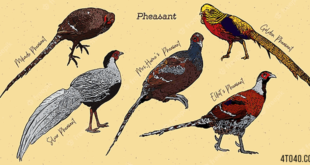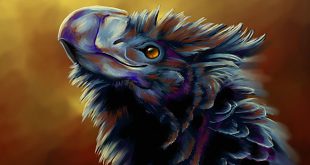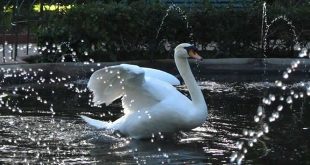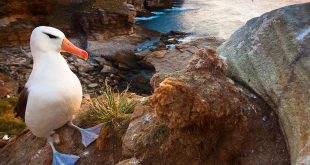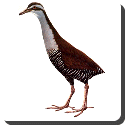 Rail — The rails, or Rallidae, are a large cosmopolitan family of small to medium-sized birds. The family exhibits considerable diversity and the family also includes the crakes, coots, and gallinules. Many species are associated with wetlands, although the family is found in every terrestrial habitat except dry deserts, polar regions and alpine areas above the snow line.
Rail — The rails, or Rallidae, are a large cosmopolitan family of small to medium-sized birds. The family exhibits considerable diversity and the family also includes the crakes, coots, and gallinules. Many species are associated with wetlands, although the family is found in every terrestrial habitat except dry deserts, polar regions and alpine areas above the snow line.
The most typical family members occupy dense vegetation in damp environments near lakes, swamps, or rivers. Reedbeds are a particularly favoured habitat. They are omnivorous, and those that migrate do so at night: most nest in dense vegetation. In general, they are shy and secretive birds, and are difficult to observe.
Most species walk and run vigorously on strong legs, and have long toes which are well adapted to soft, uneven surfaces. They tend to have short, rounded wings and although they are generally weak fliers, they are, nevertheless, capable of covering long distances.
Island species often become flightless, and many of them are now extinct following the introduction of terrestrial predators such as cats, rats and pigs.
Many reedbed species are secretive (apart from loud calls), crepuscular, and have laterally flattened bodies. In the Old World, long-billed species tend to be called rails and short-billed species crakes. North American species are normally called rails irrespective of bill length. The smallest of these is the Swinhoe’s Rail, at 13 cm (5 inches) and 25 grams.
The larger species are also sometimes given other names. The black coots are more adapted to open water than their relatives, and some other large species are called gallinules and swamphens. The largest of this group is the Takahe, at 65 cm (26 inches) and 2.7 kg (6 lbs).
The rails have suffered disproportionally from human changes to the environment and it is estimated that several hundred species of island rail have become extinct because of this. Several island species of rail remain endangered and conservation organisations and governments continue to work to prevent their extinction.
Members of the Rallidae are found on every continent except Antarctica. There are numerous island species. The most common habitats are marshland or dense forest. Rails are especially fond of dense vegetation.
The wings of all rails are short and rounded. The flight of those Rallidae able to fly, while not very powerful, can be sustained for long periods of time; many species undertake annual migrations. The weakness of their flight, however, means that they are easily blown off course and thus are common vagrants, a characteristic that has led to them colonising many isolated oceanic islands. Furthermore, these birds often prefer to run rather than fly (especially when in dense habitat). Some are also flightless at some time during their moult period.
Many island rails are flightless because small island habitats often eliminate the need to fly or move long distances. Flight makes intense demands, with the carina and flight muscles taking up to a quarter of a bird’s weight in Rallidae species. Reducing the flight muscles, along with the corresponding lowering in metabolic demands, reduces the flightless rail’s energy expenditures. For this reason flightless makes it easier to survive and colonize an island where resources are limited. Flightlessness can evolve extremely rapidly in island rails; it took as little as 125,000 years for the Laysan Rail to lose the power of flight and evolve the reduced, stubby wings only useful to keep balance when running quickly.
In general, members of Rallidae are omnivorous generalists. Many species will eat invertebrates, as well as fruit or seedlings. A few species are primarily vegetarian. Loud calls are useful in dense vegetation or at night where it is difficult to see another member of the species. Some calls are territorial.
 Kids Portal For Parents India Kids Network
Kids Portal For Parents India Kids Network
